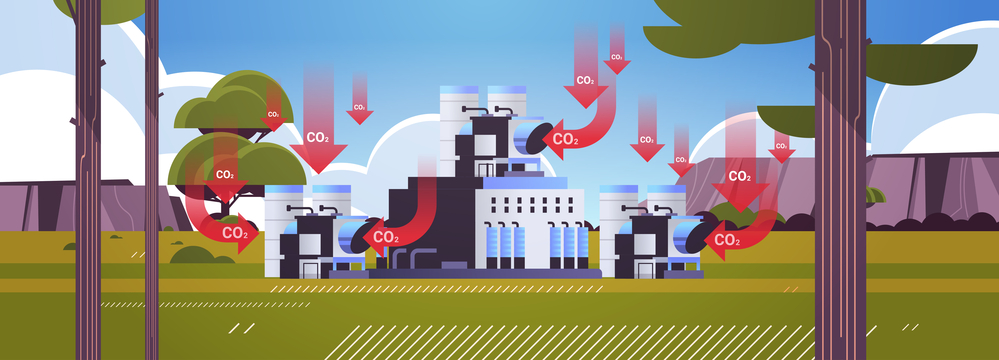
The evolution of the energy landscape has been remarkable, from civilizations' humble flames to today's elaborate and complex power infrastructure, showcasing our human ingenuity, adaptability, and ambition.
Today, we stand on the eve of another transformative moment. The global dialogue is shifting decisively toward decarbonization and the embrace of sustainable energy solutions, with pioneering microgrids emerging as key players in energy decarbonization.
ICL Group, an innovative global specialty minerals company, stands at the forefront of this energy transition, showcasing a strong corporate commitment to decarbonization.
Through initiatives, like the Green Sdom project, designed to reduce approximately 1 million tons of carbon emissions stemming from the Dead Sea's Sdom site, and other ambitious targets, ICL not only signals its own pivot towards renewable energy- planning to incorporate microgrids into their strategy to reduce their carbon footprint- but also charts a course for the broader adoption of sustainable energy solutions.
The Urgency of Decarbonization
The transition from wood to fossil fuels marked a significant phase in human development, enabling industrialization. However, today, emissions are nearly 150 times what they were in 1850, leading to issues like global warming and ocean acidification. But today, governments are framing policies, and interestingly, private players like ICL are spearheading innovations for a greener future.
Yet, challenges can present opportunities, communities are rallying together, while some of the most profound scientific and entrepreneurial minds of our generation are searching for sustainable alternatives. This shared responsibility and collective effort present a hopeful picture for our planet's future.
For many industries, rising operational costs, tighter regulations, and increasing societal pressure, are nudging industries toward sustainable solutions. Embracing cleaner energy sources is a strategic move that promises long-term operational efficiency and resilience.
Understanding Microgrids
Enter microgrids - the game-changers in the energy landscape. Contrary to what the name connotes, microgrids aren't necessarily 'micro.' They are localized energy systems that can function independently. Given the uncertainties surrounding traditional grids - from infrastructure damages to fluctuating demands - microgrids stand out as a driving force.
Imagine a community unaffected by city-wide blackouts, or remote areas harnessing localized energy sources, reducing their dependence on distant power infrastructures. Microgrids not only bring stability but also empower communities. Their adaptability and scalability make them a viable solution for diverse settings, from bustling cities to secluded villages.
For industries, especially those operating in remote or energy-intensive areas, microgrids offer the prospect of energy autonomy. Factories being able to optimize production schedules based on energy availability or industrial zones becoming energy self-sufficient, reducing external dependencies and operational pitfalls.
Hybrid Microgrids: A Step Forward
While traditional microgrids rely on single energy sources, hybrid microgrids can combine various energy sources like solar, wind, and or geothermal. The beauty of this system lies in its adaptability. If one source fails, another kicks in. Not only are they environmentally beneficial, aiding rapid decarbonization, but these grids can potentially cut energy costs, stabilize financial planning, and even allow businesses to sell any surplus energy.
Further, by sourcing energy from a myriad of origins, hybrid microgrids represent a shift in how we think about power generation. It's no longer about maximizing output from one source but optimizing a blend of many. This mix of energy sources safeguards against unpredictable disruptions but also promotes an eco-conscious approach to power generation.
For industrial stakeholders, this adaptability translates to enhanced operational robustness. Diversified energy sources mean that industries can weather supply fluctuations or disruptions. Furthermore, as industries expand and adapt, hybrid microgrids can be scaled and modified, ensuring that energy infrastructures remain agile and responsive to changing industrial needs.
The Challenges Ahead
The road to a microgrid-powered world has its hurdles. Current energy storage solutions still need to mature. For microgrids to flourish, we need:
● Practical templates for businesses to emulate.
● Innovations in energy storage and hydrogen use.
● Strong government backing and heightened public demand for green energy.
Yet, in every challenge lies the seed of innovation. The limitations today will undoubtedly drive tomorrow's breakthroughs. History has shown us that necessity is often the catalyst for revolutionary solutions.
As industries, researchers, and policymakers converge on this challenge, the future of microgrids looks promisingly bright. As pioneers like ICL Group evaluate and demonstrate the viability of these systems, it paves the way for widespread industrial adoption, forging a sustainable industrial future.
Conclusion
Rising emissions and environmental challenges demand a transformative response. Governments and forward-thinking companies realize that sustainability is both a moral imperative and a strategic advantage.
The journey from decarbonization to the adoption of microgrids symbolizes a monumental shift in our energy narrative. It's a story of acknowledgment, innovation, and collaboration. Companies like ICL lead the way and the promise of a sustainable, reliable future becomes more tangible.
Microgrids, especially hybrid ones, offer localized, reliable energy, fostering resilience in communities and industries alike. This adaptability aligns perfectly with the changing landscape of power generation, emphasizing a greener and more balanced approach.
For the industrial sector, this is more than just a narrative-it's a blueprint for the future. It's a call to action for industries to embrace change, prioritize sustainability, and leverage the power of innovation. As we harness the potential of microgrids, we're not just powering industries; we're powering a brighter, cleaner, and more sustainable future for all.
* This is a contributed article and this content does not necessarily represent the views of techtimes.com









